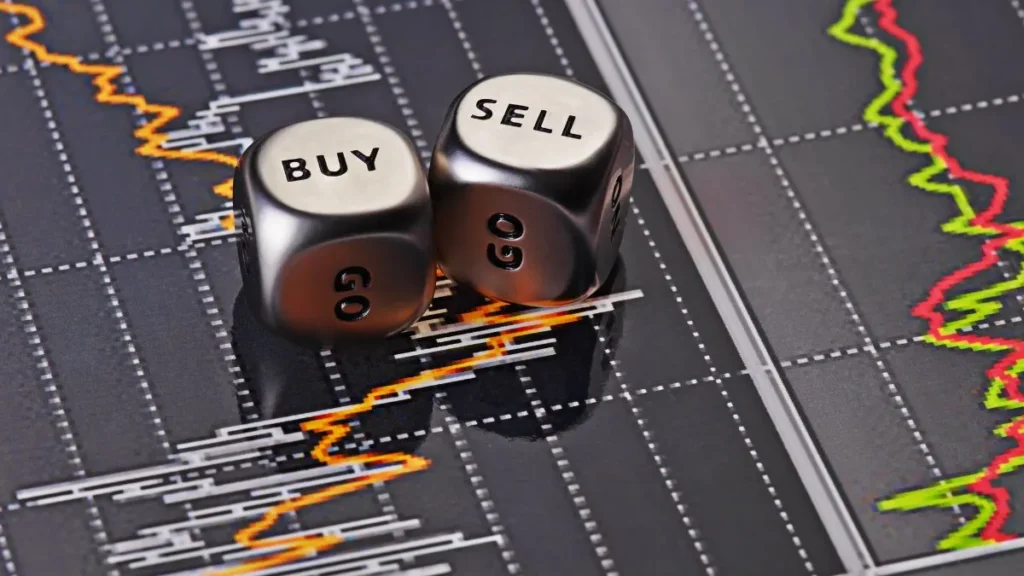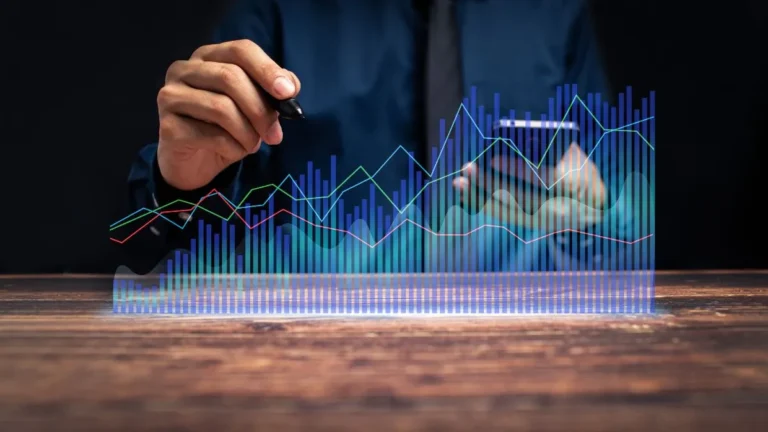Trading Discipline: Unveiling the True Impact of Technical Indicators
In the volatile world of financial markets, traders constantly seek strategies to minimize risk and maximize potential returns. Technical indicators have long been touted as a lifeline for investors, promising to guide decision-making and protect against costly mistakes. But do these mathematical tools truly provide the trading discipline traders desperately seek?
The Illusion of Absolute Protection
Many traders mistakenly view technical indicators as infallible shields against market unpredictability. While these analytical tools offer valuable insights, they are not magical solutions that guarantee successful trades. The real discipline comes from understanding their limitations and developing a comprehensive trading approach.
Core Challenges with Technical Indicators
- Lagging nature of most indicator signals
- Potential for false positives and negative signals
- Overreliance leading to analysis paralysis
- Inability to predict unexpected market events
Psychological Aspects of Trading Discipline
Technical indicators can provide data, but they cannot replace the critical psychological components of successful trading. Emotional control, risk management, and consistent strategy implementation are far more crucial than any single mathematical indicator.
Key Psychological Trading Disciplines
- Maintaining emotional neutrality
- Implementing strict risk management protocols
- Creating and following a predefined trading plan
- Accepting and learning from trading losses
Indicator Effectiveness: A Nuanced Perspective
Successful traders understand that technical indicators are tools, not absolute predictors. They use multiple indicators in conjunction, cross-referencing signals and combining them with fundamental analysis and market sentiment.
| Indicator Type | Strengths | Limitations |
|---|---|---|
| Moving Averages | Trend identification | Lag in fast-moving markets |
| Relative Strength Index (RSI) | Momentum measurement | Can provide false overbought/oversold signals |
| Bollinger Bands | Volatility assessment | Requires additional confirmation |
Building a Robust Trading Framework
Rather than relying solely on technical indicators, traders must develop a holistic approach. This involves continuous learning, adapting to market conditions, and maintaining a disciplined mindset that goes beyond mathematical calculations.
Strategic Trading Components
- Comprehensive market research
- Risk management strategies
- Continuous skill development
- Emotional intelligence
- Flexible yet consistent trading methodology
Critical Considerations for Indicator Usage
Traders should view technical indicators as complementary tools, not definitive decision-makers. They provide context and potential insights, but ultimate trading decisions require human judgment, experience, and a deep understanding of market dynamics.
The most successful traders recognize that true discipline comes from within. Technical indicators can support decision-making, but they cannot replace strategic thinking, emotional control, and a comprehensive understanding of market mechanisms.

Risk Management Strategies for Consistent Trading Performance
Successful trading isn’t just about picking winning stocks or predicting market movements—it’s fundamentally about protecting your capital through strategic risk management. Traders who consistently perform well understand that survival in financial markets depends more on minimizing potential losses than chasing massive gains.
Understanding Risk Exposure
Every trade carries inherent risks that can quickly erode investment portfolios. Professional traders recognize that managing risk isn’t optional; it’s a critical component of sustainable trading performance. The most effective risk management approach involves multiple layers of protection designed to shield your capital from unexpected market volatility.
Core Risk Management Principles
- Never risk more than 1-2% of total trading capital on a single trade
- Implement strict stop-loss orders
- Diversify investment across different market sectors
- Maintain consistent position sizing
Position Sizing Strategies
Position sizing represents one of the most powerful risk control mechanisms available to traders. By calculating precise position sizes relative to account balance and risk tolerance, investors can create a systematic approach that prevents catastrophic losses. This method transforms emotional trading into a disciplined, mathematical process.
Calculating Optimal Position Size
Traders can determine appropriate position sizes by evaluating:
- Total account value
- Individual trade risk percentage
- Distance between entry point and stop-loss
- Current market volatility
Advanced Risk Mitigation Techniques
Professional traders employ sophisticated techniques beyond basic stop-loss strategies. These include options hedging, correlation analysis, and dynamic risk adjustment based on market conditions. By continuously adapting risk parameters, traders can protect investments during unpredictable market environments.
Psychological Risk Management
Technical strategies alone cannot guarantee trading success. Emotional discipline plays an equally crucial role in managing investment risks. Successful traders develop mental frameworks that prevent impulsive decisions, helping them stick to predetermined trading plans regardless of market fluctuations.
Technology-Driven Risk Control
Modern trading platforms offer advanced risk management tools that can automatically monitor and adjust trading parameters. These technologies enable real-time risk assessment, providing traders with instant insights into potential exposure and helping them make informed decisions quickly.
Key Technological Risk Management Features
- Automated stop-loss execution
- Real-time portfolio risk analysis
- Algorithmic trade monitoring
- Instantaneous margin requirement tracking
Performance Tracking and Continuous Improvement
Consistent trading performance requires ongoing analysis of historical trade data. By maintaining detailed trading journals and conducting regular performance reviews, investors can identify patterns, refine strategies, and progressively improve risk management approaches.
Ultimately, successful risk management transforms trading from a high-stakes gamble into a calculated, strategic endeavor. Traders who prioritize capital preservation and implement robust risk control mechanisms position themselves for long-term financial success in increasingly complex market landscapes.
Psychological Barriers in Successful Trading Environments
Navigating the complex world of trading requires more than just technical skills and market knowledge. Successful traders understand that psychological barriers can significantly impact their performance and decision-making processes.
The Mental Landscape of Trading Challenges
Traders often face invisible obstacles that can derail their most carefully planned strategies. These psychological barriers emerge from deep-rooted emotional responses, fear, and cognitive biases that interfere with rational decision-making.
Fear and Emotional Triggers
One of the most significant psychological barriers is fear. Traders frequently experience:
- Fear of losing money
- Anxiety about missed opportunities
- Paralysis during critical market moments
Cognitive Biases in Trading
The human brain is wired with several cognitive biases that can sabotage trading performance. Confirmation bias leads traders to seek information that supports their existing beliefs, while loss aversion makes them hold onto losing positions far longer than rational analysis would suggest.
Breaking Through Mental Barriers
Successful traders develop robust mental frameworks to overcome these psychological challenges. This involves creating systematic approaches that minimize emotional interference and promote disciplined decision-making.
Developing Emotional Intelligence
Emotional intelligence becomes a critical skill in trading. Traders must learn to:
- Recognize emotional triggers
- Manage stress effectively
- Maintain objectivity during market volatility
Strategic Mental Preparation
Professional traders invest significant time in mental preparation. This includes meditation, journaling, and developing pre-trading rituals that create a consistent and focused mindset.
Risk Management Mindset
Understanding and accepting risk is crucial. Traders must internalize that losses are an inherent part of trading, not personal failures. This perspective allows for more rational decision-making and prevents emotional spirals.
Tools for Psychological Resilience
Several practical tools can help traders build psychological resilience:
- Regular self-assessment
- Structured trading plans
- Continuous learning and adaptation
- Psychological training and coaching
Performance Tracking
Maintaining a detailed trading journal helps traders identify patterns in their psychological responses. By objectively analyzing past decisions, traders can develop more effective strategies for managing emotional responses.
The Role of Discipline
Discipline serves as the cornerstone of overcoming psychological barriers. It involves creating and strictly adhering to predefined trading rules, regardless of emotional impulses.
Neurological Perspectives
Neuroscience research suggests that repeated disciplined actions can rewire neural pathways, gradually reducing emotional reactivity and improving decision-making capabilities.
Building Long-Term Trading Resilience
Trading success is not about eliminating emotions but learning to manage them effectively. Traders who develop strong psychological frameworks can transform potential barriers into opportunities for growth and improved performance.
By recognizing and addressing these psychological challenges, traders can create more consistent and rational approaches to market interactions. The journey involves continuous learning, self-reflection, and a commitment to personal development beyond traditional market analysis.
Advanced Indicator Analysis: Beyond Simple Signal Generation
In the dynamic world of trading, indicators have long been considered powerful tools for market analysis. However, successful traders understand that these technical instruments are far more nuanced than simple signal generators. True mastery requires a sophisticated approach that goes beyond surface-level interpretation.
Sophisticated Indicator Interpretation Strategies
Traders often fall into the trap of treating indicators as absolute truth, but experienced professionals know they are merely statistical representations of market behavior. The key lies in understanding the contextual layers beneath raw numerical data. Each indicator carries unique strengths and limitations that demand careful, intelligent analysis.
Multi-Dimensional Indicator Analysis
Professional traders develop a multi-layered approach to indicator evaluation. Instead of relying on a single indicator, they create complex frameworks that cross-validate signals across different technical tools. This method helps eliminate false positives and provides a more robust trading strategy.
- Correlation analysis between multiple indicators
- Contextual market environment assessment
- Historical performance verification
- Adaptive signal confirmation techniques
Risk Management Integration
Advanced traders understand that indicators are risk management tools, not guaranteed profit mechanisms. They incorporate sophisticated probability models that assess not just potential entry and exit points, but also potential failure scenarios. This approach transforms indicators from simple signal generators into comprehensive risk assessment instruments.
Critical Evaluation Metrics
Developing a robust indicator analysis framework requires systematic evaluation. Traders must consider several critical metrics that extend beyond traditional technical analysis:
| Metric | Assessment Criteria |
|---|---|
| Signal Reliability | Historical accuracy percentage |
| Adaptive Performance | Consistency across different market conditions |
| Predictive Strength | Lead time and precision of signals |
Psychological Dimensions of Indicator Usage
Successful trading isn’t just about mathematical precision—it’s about understanding the psychological implications of technical signals. Experienced traders recognize that indicators reflect collective market psychology, not just mathematical calculations.
The most sophisticated approach involves integrating behavioral finance principles with technical analysis. This means looking beyond the numbers to understand the underlying market sentiment, trader reactions, and potential momentum shifts.
Advanced Computational Techniques
Modern traders leverage machine learning and artificial intelligence to enhance indicator analysis. These advanced computational methods can identify complex patterns that traditional analysis might miss. By using algorithmic techniques, traders can develop more nuanced and adaptive trading strategies.
- Machine learning pattern recognition
- Neural network signal validation
- Predictive modeling with historical data
- Real-time adaptive analysis
Strategic Implementation Framework
The ultimate goal of advanced indicator analysis is not just generating signals but creating a comprehensive trading strategy. This requires a holistic approach that combines technical analysis, risk management, and adaptive decision-making.
Traders must continuously evolve their methodologies, recognizing that market dynamics are constantly changing. What works today might become obsolete tomorrow, making continuous learning and adaptation crucial for long-term success.
Building a Robust Trading Methodology Through Disciplined Approach
Successful trading isn’t just about finding the right indicators or having a perfect strategy—it’s about developing an ironclad discipline that guides every decision in the financial markets. Traders who consistently outperform others understand that methodology is more than just technical analysis; it’s a comprehensive approach that integrates psychological resilience, strategic planning, and meticulous execution.
The Core of Trading Excellence
Discipline in trading represents the fundamental difference between random speculation and calculated investment. It’s the invisible framework that transforms potential chaos into structured opportunity. Traders who master their emotional responses and maintain consistent principles create a significant advantage in unpredictable market environments.
Key Psychological Elements of Trading Discipline
- Emotional control under market pressure
- Consistent risk management strategies
- Objective decision-making processes
- Systematic approach to market analysis
Strategic Risk Management Techniques
Robust trading methodologies prioritize risk management as their primary foundation. Professional traders understand that protecting capital is more critical than generating immediate profits. This means implementing strict position sizing, understanding maximum acceptable loss levels, and never risking more than a predetermined percentage of total trading capital.
Risk Allocation Framework
| Risk Percentage | Trading Capital Impact | Recommended Strategy |
|---|---|---|
| 1-2% | Conservative Approach | Ideal for Long-Term Preservation |
| 3-5% | Moderate Risk | Balanced Growth Strategy |
| 5%+ | High-Risk Exposure | Not Recommended for Sustainable Trading |
Developing a Personal Trading Methodology
Creating a personalized trading approach requires deep self-awareness and continuous learning. Successful traders develop methodologies that align with their psychological profile, risk tolerance, and financial objectives. This involves extensive backtesting, understanding market dynamics, and creating repeatable processes that minimize emotional interference.
Critical Methodology Components
- Clear entry and exit criteria
- Predetermined risk parameters
- Regular performance review mechanisms
- Adaptable strategy refinement
Technological Integration and Discipline
Modern trading platforms offer sophisticated tools that can enhance disciplinary practices. Automated stop-loss mechanisms, real-time performance tracking, and algorithmic trading systems provide traders with objective frameworks that reduce emotional decision-making. However, technology remains a tool—not a replacement for strategic thinking and personal discipline.
Continuous Learning and Adaptation
The most successful traders view their methodology as a living strategy, constantly evolving with market conditions and personal experience. This requires maintaining a growth mindset, documenting trading activities, analyzing performance metrics, and being willing to modify approaches based on empirical evidence.
Ultimately, building a robust trading methodology transcends technical indicators or market predictions. It’s about cultivating an internal operating system that remains calm, rational, and strategic under varying market conditions. Discipline isn’t just a strategy—it’s a comprehensive approach to navigating financial markets with precision and consistency.
Conclusion
Trading success isn’t merely about technical indicators or complex strategies—it’s fundamentally about disciplined execution and self-awareness. The journey through advanced indicator analysis and risk management reveals a critical truth: tools alone cannot guarantee profitable trades. Traders must develop a holistic approach that integrates psychological resilience, strategic thinking, and continuous learning.
Successful trading demands more than mechanical signal interpretation. It requires a deep understanding of personal emotional triggers, consistent risk management protocols, and the ability to maintain composure during market volatility. Technical indicators serve as valuable guides, but they are not infallible prophets of market movement.
The most effective traders recognize that discipline transcends technical analysis. They cultivate a mindset of adaptability, continuously refining their methodology through structured learning and self-reflection. By embracing a comprehensive approach that balances analytical tools with psychological fortitude, traders can navigate market complexities with greater confidence and consistency.
Ultimately, trading discipline is an ongoing process of personal and professional development. Indicators provide insights, but your ability to make rational decisions under pressure, manage risk intelligently, and maintain emotional equilibrium determines long-term success. The most powerful trading system is one that harmonizes technical knowledge with robust psychological preparation.
Continuous improvement, self-awareness, and a commitment to disciplined execution remain the true cornerstones of sustainable trading performance. Master these elements, and technical indicators become not just tools, but strategic allies in your financial journey.
Also Read Warrior Trading Discounts: Save Big Or Miss Out?




Leave Feedback